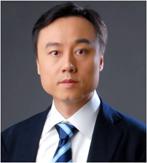SEMINAR
The State Key Lab of
High Performance Ceramics and Superfine Microstructure
Shanghai Institute of Ceramics, Chinese Academy of Sciences
中国科学院上海硅酸盐研究所 高性能陶瓷和超微结构国家重点实验室
国 家 重 点 实 验 室 特 邀 学 术 报 告
Upconversion Nanocrystals: A New Class of Luminescent Bioprobes
Speaker
Dr. Xiaogang Liu
Institute of Materials Research and Engineering, Singapore
Department of Chemistry, National University of Singapore
时间:2012年05月24日(星期四)上午 10: 00
地点:2号楼607会议室(国家重点实验室)
欢迎广大科研人员和研究生参与讨论!

Biodata:
Dr. Xiaogang Liu (E-mail: chmlx@nus.edu.sg) earned his BS degree (1996) in Chemical Engineering from Beijing Technology and Business University, China. He received his MS degree (1999) in Chemistry from East Carolina University in Greenville, North Carolina under the direction of Prof. John Sibert and completed his PhD (2004) in Chemistry at Northwestern University in Evanston, Illinois under the supervision of Prof. Chad Mirkin. In the same year he became a postdoctoral fellow in the group of Prof. Francesco Stellacci at MIT. He joined the faculty of the National University of Singapore in 2006. He holds a joint appointment with the Institute of Materials Research and Engineering, Agency for Science, Technology and Research. His interests include nanomaterials synthesis, supramolecular chemistry, and surface science for catalysis, sensors and biomedical applications.
Abstract:
Lanthanide-doped inorganic nanocrystals typically comprise an insulating host material and lanthanide dopant ions embedded in the host lattice. The luminescence of lanthanide-doped nanocrystals primarily originates from intra-configurational 4f electron transitions within the localized dopant ions. In stark contrast to quantum dots, quantum confinement effects are typically not expected in lanthanide-doped nanocrystals due to small Bohr radius of the exciton in the host, as well as weak interaction between the 4f electrons of the dopant ions and the host material. As a result, the luminescence properties of lanthanide-doped nanocrystals closely resemble those of the bulk counterparts. The emission profiles of lanthanide-doped nanocrystals are usually manipulated by varying dopant compositions and concentrations in the host lattice. In this talk, I will present a doping principle that is capable of altering nanocrystal growth processes with simultaneous control over crystallographic phase and size of the nanocrystals. I will also discuss our recent efforts in developing novel photon upconversion schemes based on energy migration processes and utilizing upconversion nanocrystals as novel luminescent labels for biological applications.
References:
1) F. Wang, Y. Han, C. S. Lim, Y. Lu, J. Wang, J. Xu, H. Chen, C. Zhang, M. Hong and X. Liu*, “Simultaneous Phase and Size Control of Upconversion Nanocrystals through Lanthanide Doping,” Nature 2010, 463, 1061.
2) F. Wang, R. Deng, J. Wang, Q. Wang, Y. Han, H. Zhu, X. Chen, X. Liu*, “Energy Migration Upconversion in Lanthanide-Doped Core-Shell Nanocrystals, ” Nature Materials 2011, 10, 968.
3) R. Deng, X. Xie, M. Vendrell, Y.‐T. Chang, X. Liu*, “Intracellular Glutathione Detection using MnO2-Nanosheet-ModifiedUpconversion Nanoparticles ” Journal of the American Chemical Society 2011, 133, 20168.
4) Y. Yang, Q. Shao, R. Deng, X. Teng, C. Wang, K. Cheng, Z. Cheng, L. Huang, Z. Liu, X. Liu*, B. Xing*, “In Vitro and In Vivo Uncaging and Bioluminescence Imaging through Photocaged Upconversion Nanoparticles,”Angewandte Chemie International Edition2012, 15, 3125.


 沪公网安备 31010502006565号
沪公网安备 31010502006565号